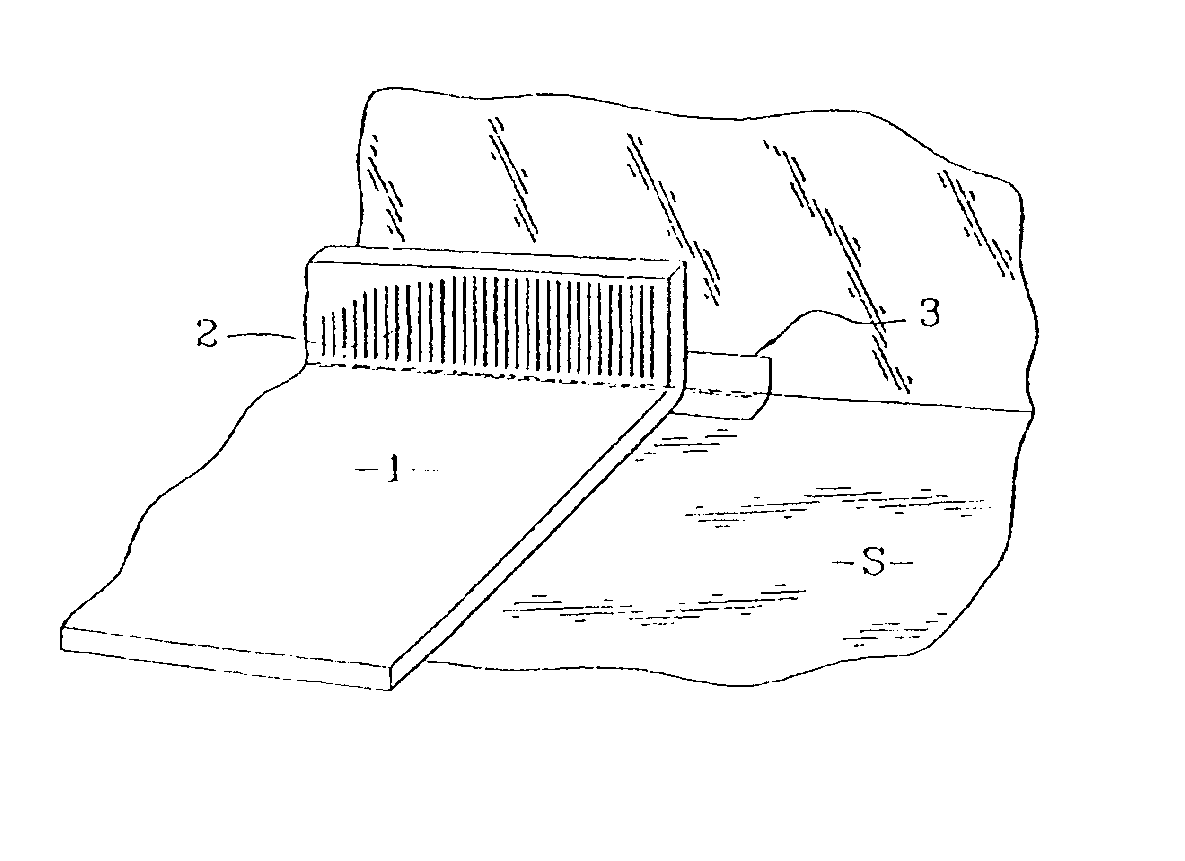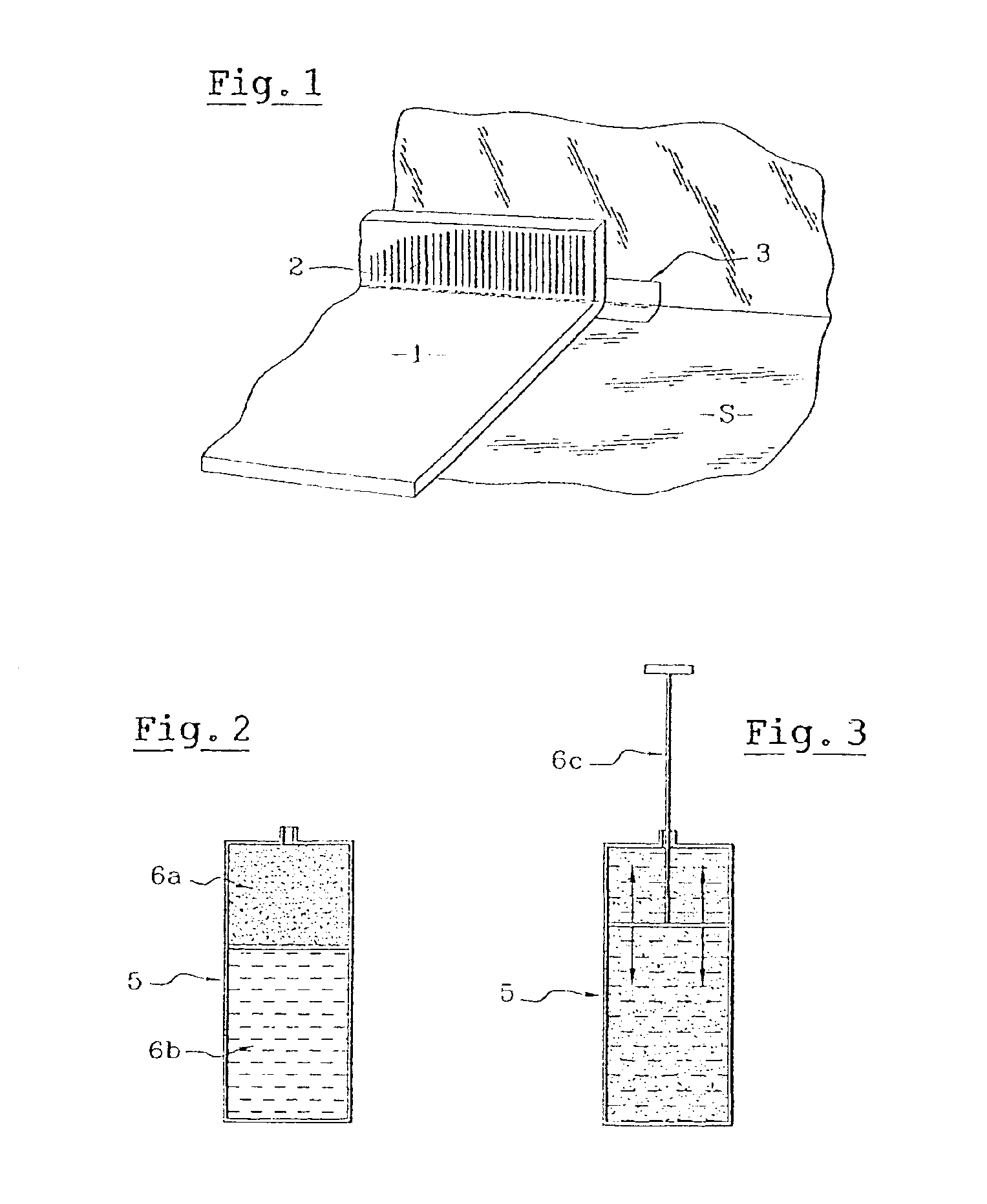Method for the producing of a floor covering
a technology for floor coverings and manufacturing methods, applied in the direction of adhesive types, building components, lamination, etc., can solve the problems of deterioration of the surface coating properties, slight shrinkage, fouling problems, etc., and achieve the effect of not deteriorating the appearance or surface properties of the covering
- Summary
- Abstract
- Description
- Claims
- Application Information
AI Technical Summary
Benefits of technology
Problems solved by technology
Method used
Image
Examples
Embodiment Construction
The invention employed for laying a floor covering, comprising a wear layer having a thickness of 0.7 mm, made of plasticized PVC reinforced with a nonwoven mat combined with a glass mesh, and a surface coating based on a crosslinked polyurethane, consisting of a film giving the material its ultraviolet, abrasion and wear resistance properties.
This complex is combined with a foam underlay. The total thickness is 3.2 mm.
In a first phase of installing such a covering as shown in FIG. 1, a first width (1) is stuck to the floor (S) using an acrylic adhesive in emulsion form, deposited using a spatula.
The plinth-like upturn (2) is also formed by adhesive bonding, an angle piece (3) being provided in the corner.
Once this first width (1) has been laid, a bead of adhesive (7) is deposited as shown in FIG. 4, using a gun (4) holding a cartridge (5), along the entire length of the width laid.
Refering to FIG. 2, the cartridge (5) contains the hardener (6a), namely an aliphatic isacyanate and t...
PUM
| Property | Measurement | Unit |
|---|---|---|
| viscosity | aaaaa | aaaaa |
| viscosity | aaaaa | aaaaa |
| width | aaaaa | aaaaa |
Abstract
Description
Claims
Application Information
 Login to View More
Login to View More - R&D
- Intellectual Property
- Life Sciences
- Materials
- Tech Scout
- Unparalleled Data Quality
- Higher Quality Content
- 60% Fewer Hallucinations
Browse by: Latest US Patents, China's latest patents, Technical Efficacy Thesaurus, Application Domain, Technology Topic, Popular Technical Reports.
© 2025 PatSnap. All rights reserved.Legal|Privacy policy|Modern Slavery Act Transparency Statement|Sitemap|About US| Contact US: help@patsnap.com



